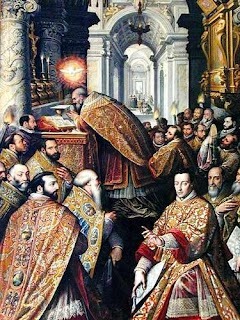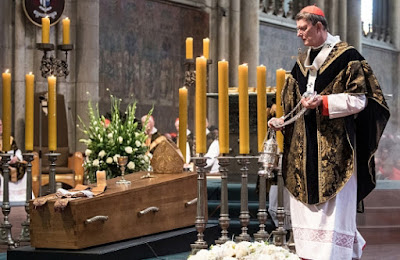 Earlier this year, the Saint Bede Studio completed a set of Solemn Mass vestments for an ordinand in the United States.
Earlier this year, the Saint Bede Studio completed a set of Solemn Mass vestments for an ordinand in the United States.These lovely vestments were made in the style known as "Gothic Revival".
A brighter red English ecclesiastical brocade was ornamented quite simply with new braids designed by the Studio. The wider of the two braids - which is derived from the designs of AWN Pugin - is named Lux Aeterna. Its geometrical ornament, in a pewter colour, is upon a black background. The lining of these vestments was in a deep shade of gold, tending towards brown.
This set consisted of a chasuble and two dalmatics, one of which is illustrated in the adjacent image.
Please click on the images for an enlarged view.
Enquiries : Visit this page































